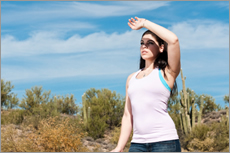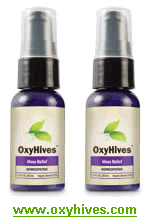Hives Treatment Center Over 150,000 patients helped since 2001
![]()
 What Are Heat Hives?
What Are Heat Hives?
Heat hives is an allergic reaction to heat and is medically known as cholinergic urticaria. Cholinergic urticaria or heat hives is more or less the condition of being hypersensitive or extremely sensitive to heat, or the response of sweating. People with this condition often wonder why they itch when they exercise, or any time they seem to get hot.
Heat hives can happen at just about any age, as there have been documented cases in children as young as 3 years old. The majority of cases however, develop during the teenage years throughout the early twenties. Heat hives can occur at any age and can come and go often, or simply happen once and never again. There is no difference in prevalence between men and women, or races. Heat hives affects people in all areas of the world, regardless of global location. Heat hives are a common type of physical hives and up to 15% of people in the general world population that suffers from chronic hives also will have heat hives.
Best Hives Treatment For Heat Hives |
|
 |
What Causes Heat Hives?
If you have heat hives, you may get a hives rash as a reaction to any type of action that makes your body temperature rise, including sun bathing (also see sun hives), exercising, stress, taking a shower or bath with hot water or going from a cool area to a warm area of air or water. No symptoms are present when not in a hot area or hot water, and other than experiencing one of these stimuli, you wouldn’t know you have heat hives. When these actions occur, hives are seen as a response to the temperature change.
The name cholinergic urticaria spells out what causes the heat hives. Cholinergic means that it is directly related to a chemical in the body called acetylcholine. This is a neurotransmitter that is released in the skin’s nerve endings and causes the initial heat hives body response. Heat hives have been known to morph into body hives under the right conditions. Urticaria is a Latin word that actually is the name of a plant called a stinging nettle. This plant when touched by humans, stings. In heat hives, histamines are released by the immune system due to the allergen heat. This causes the itchy or prickly feeling on the skin.
What are the Symptoms of Heat Hives?
Symptoms of heat hives includes an itching or burning sensation during the initial attack, and normally goes away when the body’s overall temperature is cooled. There are other types of hives such as miliaria rubra which is called prickly heat, and is sometimes confused with heat hives. The two have hives symptoms that are much alike, but prickly heat is caused by a bacterial infection or a blockage of the sweat glands.
People with heat hives normally find that these symptoms and attacks happen suddenly, and sometimes will disappear just as suddenly. Some people find that they are fine one day and the following day they have heat hives. This condition is known to last an entire lifetime in some patients, meaning that if you have it once, you will probably have recurrences.
How Do I Get Rid of My Heat Hives?
For years now we have recommended over three dozen different medications for people that suffer from heat hives. A few such hives treatments have proven to be more effective at eliminating heat hives than others. Learn more on the treatment options page.
On a side note, dermatologists that do not specialize in hives usually only offer antihistamine medications, which only treat the symptoms and not the hives themselves. This is why antihistamines are poor substitute for a real heat hives cure.